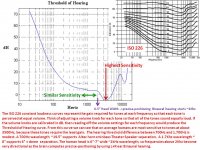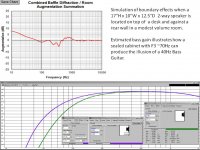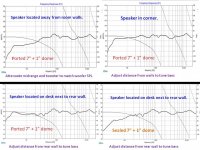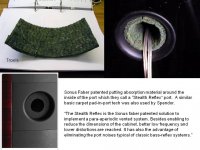If you're looking for good value then consider giving a pair of JBL LSR305 monitors a listen. They are active speakers with built-in amplifiers so you are covered on that end and they seem to satisfy your other requirements quite well. New or used they are good value, probably as good or better than you could build for that price.
A few on-desk placement SPL sims.
The ISO 226 study of constant loudness curves provides data which supports 1600-1700Hz as desirable for crossover between the midrange and tweeter. Crossovers at higher frequencies move into a high sensitivity range of human hearing, as well as move into wavelengths shorter than the width of a human head where the brain computes precise positioning by using L+R ear Bianural hearing.
Simulation of boundary effects when a 17"H x 10"W x 12.5"D 2-way speaker is located on top of a desk and against a rear wall in a modest volume room illustrates the amount(~5db) of reflected bass energy gain possible. You will not hear the first-edge impact of a bass transient, but you will hear the summation of reflected increase in low frequency energy.
Simulations of locating this speaker on a desk and against(near) the rear wall illustrate good low frequency reproduction from a ported alignment, and fast transient sealed alignment bass with a slow roll-off from F3~70Hz. The 0.75cuft cabinet can support the flexibility of an open bass port, with the option to seal this bass port later.
The ISO 226 study of constant loudness curves provides data which supports 1600-1700Hz as desirable for crossover between the midrange and tweeter. Crossovers at higher frequencies move into a high sensitivity range of human hearing, as well as move into wavelengths shorter than the width of a human head where the brain computes precise positioning by using L+R ear Bianural hearing.
Simulation of boundary effects when a 17"H x 10"W x 12.5"D 2-way speaker is located on top of a desk and against a rear wall in a modest volume room illustrates the amount(~5db) of reflected bass energy gain possible. You will not hear the first-edge impact of a bass transient, but you will hear the summation of reflected increase in low frequency energy.
Simulations of locating this speaker on a desk and against(near) the rear wall illustrate good low frequency reproduction from a ported alignment, and fast transient sealed alignment bass with a slow roll-off from F3~70Hz. The 0.75cuft cabinet can support the flexibility of an open bass port, with the option to seal this bass port later.
Attachments
- Status
- Not open for further replies.



